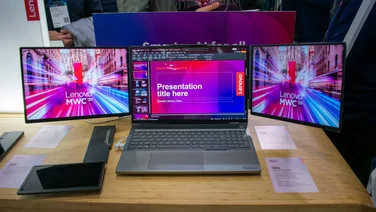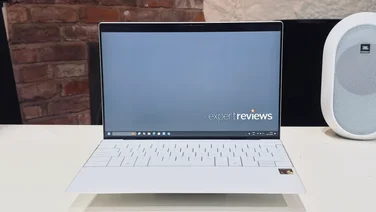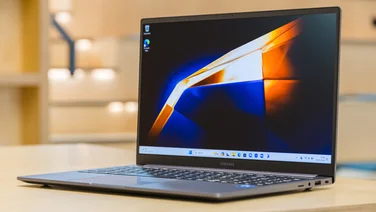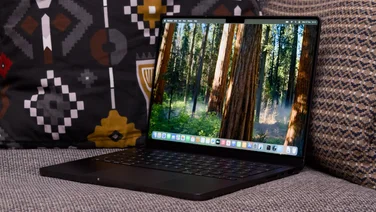To help us provide you with free impartial advice, we may earn a commission if you buy through links on our site. Learn more








- Good battery life
- Great display
- Discrete graphics card
- Cluttered keyboard layout
- No user upgrade options
- Slow SSD
When it comes to buying a laptop, it’s generally a matter of wanting it to be powerful, affordable and compact, but knowing you may have to be satisfied with just two of those features and to hell with the third.
HP has sought to resolve this conundrum with its new Envy, a 13.3in touchscreen ultra-compact laptop that features a discrete GPU, a decent-sized battery, a good baseline specification and a price that won’t make you shudder.
HP Envy 13 review: What you need to know
The Envy lineup is HP’s main laptop offering and it consists of a range of touchscreen machines at different screen sizes. There are a couple of convertible 2-in-1 models, too, with 13.3in and 15.6in screens sold under the Envy x360 banner.
The Envy 13, however, is the entry model and is available with both Intel Core i5 and Core i7 processors. The version I’ll be reviewing uses the Core i5-1135G7, which is the cheapest of the lot, and it also comes with 8GB of DDR4 RAM, 512GB of SSD storage and Nvidia GeForce MX450 graphics.
READ NEXT: The best 2-in-1 laptops you can buy
HP Envy 13 review: Price & competition
Coming in at just £900, the Envy 13 is exceptionally well priced when you consider the calibre of components and features on offer. However, competition in this segment of the laptop space is fiercely brutal.
Acer’s 14in Swift 5 is a favourite here at Expert Reviews, and it’s available for just £699 with a lovely 14in display, the same Core-i5 chip as the Envy and impressive battery life. Just as good, but a little more expensive, is Lenovo’s Yoga Slim 7. We reckon it’s the Golf GTi of notebooks courtesy of its powerful AMD Ryzen 7 chipset, excellent battery life and great speaker system.
Apple’s cheapest MacBook Air (£898) may only have a 256GB SSD and no touchscreen, but it goes like the clappers thanks to the bespoke octa-core M1 ARM processor inside and it has a lovely 2,560 x 1,600 display. We can’t omit the perennially popular Dell XPS 13, either, which starts at £849. Like the MacBook, however, the XPS 13’s 256GB SSD is a bit restrictive, and physical connectivity is rather limited as well.
READ NEXT: Check out our favourite laptop stands
HP Envy 13 review: Design & build quality
The design of the Envy is textbook HP, so you get the familiar rather angular body with a slightly raised palm rest and engraved detailing on the lid. The sandblasted and anodised silver finish looks and feels very upmarket, too.
At 1.3kg, the all-aluminium Envy isn’t the lightest notebook we’ve reviewed, but it does feel reassuringly solid and the lid is unusually rigid. Measuring 306 x 194 x 16.9mm, it’s pretty much bang on the money in terms of size and easily slides into even the dinkiest of backpacks.
Prod the keyboard and you’ll soon discover that there’s rather more flex at the centre than expected considering how robust the rest of the unit feels. The layout feels rather cluttered as well, thanks to HP’s decision to squeeze the power button and fingerprint scanner within the keyboard itself.
One victim of this clutter is the enter key, which is a small, narrow affair set above the larger return key. Apple uses the same layout on the MacBook Air and I’m not a fan of it there, either. Lenovo and Acer both manage to fit a conventional double-height enter key to their ultra-compact notebooks. Another slight drawback is that the power button has been placed next to the delete key, which is very easy to hit by mistake.








It’s not all bad news, though. The key action is nicely damped and near silent while the 110 x 60mm touchpad, although plastic-covered, is faultless. There’s also a two-stage backlight and a dedicated button to isolate the (rather decent) 720p webcam. Another dedicated key opens the HP System Control app, which lets you put the Envy into the self-explanatory Balanced, Performance or Cool power modes.
Connectivity is well catered for, too, with one drop-jaw Type-A USB 3.2 Gen 1 (5Gbits/sec) port on each side as well as a 10Gbits/sec Type-C port on the left. This supports DisplayPort 1.4 output (though not Thunderbolt), which is just as well as there’s no HDMI port.
You can charge the Envy via either the Type-C port or the DC-in jack, but the bundled black rat-and-tail 65W charger rather lets the side down. A machine this sleek and modern cries out for a compact charger like the ones you get with Huawei or Apple notebooks. A microSD card slot and 3.5mm audio jack round things out, while wireless connections – both Wi-Fi 6 and Bluetooth 5 – are handled by the usual Intel AX201 card.
Before we move on, it’s worth mentioning that the Envy 13 isn’t user-accessible or upgradable. Removing the bottom of the laptop isn’t possible without ripping off the two long rubber supports that are glued to the Envy’s base.
HP Envy 13 review: Display and audio
Since it has a gloss finish, the Envy’s 13.3in Full HD (1,920 x 1,080) 60Hz IPS display can be hard to read in direct sunlight, but otherwise it’s well up to par. Delta E (colour accuracy) is a solid 1.23 and the contrast ratio is an excellent 1,798:1.
It’s quite bright, too, maxing out at 419cd/m², with an sRGB gamut coverage and volume of 97.2% and 100.7% respectively. Watching movies on the Envy is a thoroughly enjoyable experience.
I rarely expect my ears to be blown away by the speaker performance in ultraportables, but the Envy 13’s audio capabilities were a pleasant surprise. The Bang & Olufsen-tuned speakers are well balanced and while there’s not a huge amount of bass there’s enough to make listening to music a pleasure rather than a chore.
READ NEXT: These are the best laptops for gaming
HP Envy 13 review: Performance & battery life
Ultra-compact notebooks with discrete GPUs aren’t exactly common, but the Envy 13 is a little bit special with its Nvidia MX450 backing up an Intel Core-i5 1135G7 quad-core processor with 8GB of DDR4 2,933MHz RAM. The version of the MX450 GPU fitted to the Envy 13 is the low-power model with a TGP (Total Graphics Power) of 12W rather than 25W and has just 2GB of dedicated VRAM. With a specification like that, you’ll need to temper your gaming expectations.


The Expert Reviews in-house processing benchmark scored 131 on the Envy 13, which is a good if not exceptional showing. For reference, two machines I’ve recently tested with the same processor – the Acer Swift 5 and the Huawei MateBook D15 – scored 119 and 145 respectively. The story was the same with the Geekbench 5 GPU test: 1,378 single-core and 4,476 multicore on the Envy compared to 1,387 and 5,388 for the Swift and 1,402 and 4,681 for the MateBook.


Though the discrete graphics don’t have any noticeable impact when it comes to productivity, they do pay dividends when it comes to tasks such as video rendering and actual gaming. The DiRT Showdown and Metro: Last Light Redux tests scored 99fps and 57fps, which is around double what you’d see from a system running on Intel’s integrated Xe graphics chip.
Doom 2016 ran at very close to 60fps at 1,920 x 1,080 resolution, while both Wolfenstein: Youngblood and Shadow of the Tomb Raider ran at solidly playable speeds; the former at 42fps native and the latter at 40fps. Granted, we had to dial the detail levels down to Low, but the mere fact those games were genuinely playable at all was most impressive.
To underline the value of the Nvidia GPU in video-intensive tasks, I ran the 3DMark Night Raid benchmark on the Envy 13 and the Huawei MateBook D15, which uses the same processor and also has a Performance setting but depends on the Integrated Intel graphics chip. The Envy managed a graphics score of 23,067, while the Huawei chugged along at 14,752. If you want a machine to render your latest 4K YouTube vlogs on, the Envy is clearly the machine to choose.

The 512GB NVMe SSD inside the Envy is an Intel-branded affair and proved rather pedestrian when tested. The average sequential read and write speeds we got from it were 1,559MB/s and 639MB/s. The 4K read and write results were more in keeping with what I expected, but those sequential speeds were well below. The low speeds don’t impact performance on a day-to-day basis, but it’s something worth keeping in mind.
Battery life from the 51Wh cell is worth a mention, too, since a full charge lasted 11hrs 21mins in our video rundown test. That puts the Envy right into the Champions League qualifying spots, even if it doesn’t beat the Lenovo Yoga Slim 7’s epic 15hrs 40mins or the MacBook Air’s 14hrs 40mins. Incidentally, I ran the battery test in Balanced mode: had I done so in Cool mode, I wouldn’t have been at all surprised if it lasted a little longer before the lights went out.
HP Envy 13 review: Verdict
Is the Nvidia GPU a reason to buy the Envy 13? Well, that depends entirely on what you plan on doing with it. If you want an ultracompact that can sustain some pretty serious gaming and tasks such as video rendering then that answer is unquestionably yes. Games like Shadow of the Tomb Raider and Wolfenstein: Youngblood are perfectly playable and the Envy will render video faster than any equivalent laptop that relies on an Iris Xe graphics chip.
Take the Nvidia GPU out of the equation and the Envy is still a very compelling package, offering a good display and keyboard, great battery life and a decent sound system all wrapped up in a stylish, solid and compact body. It’s an easy recommendation.






